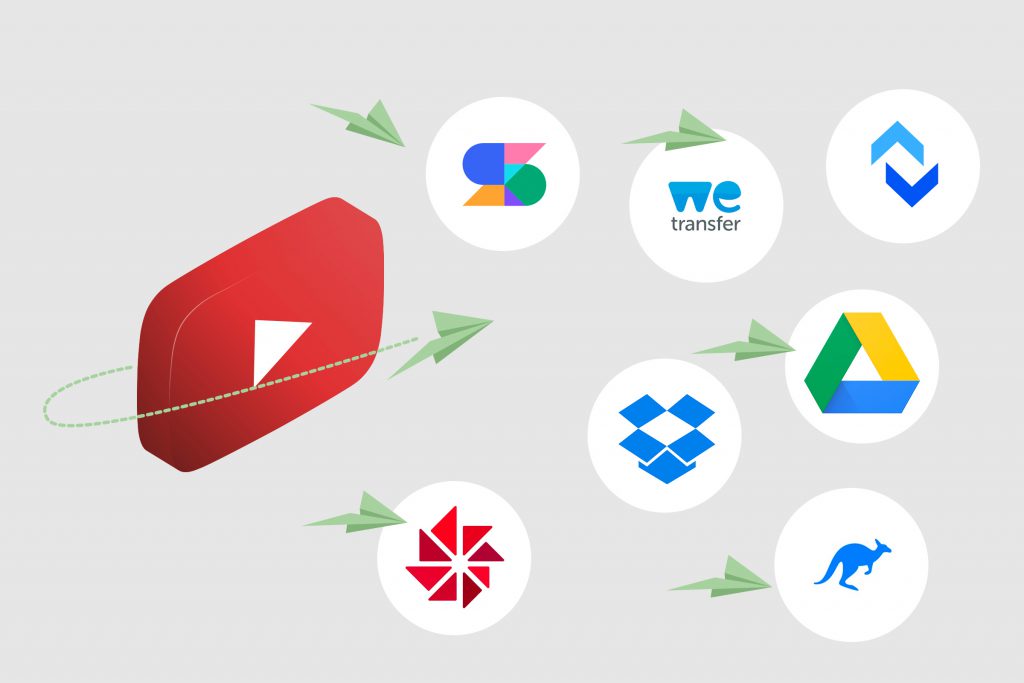To expand their YouTube channel quickly, some creators hire a YouTube editor to help them produce quality content consistently. Editing takes a lot of time, so it may be a worthwhile investment, but sending large media files to editors can be a pain.
The advent of cloud storage ushered in a variety of online storage solutions all seeking to offer their services to people frustrated with the restrictions of sharing large files. Here are a few ways to send raw footage easily and securely without breaking the bank:
Google Drive
Google Drive is a widely utilized cloud storage option for sharing files of any kind. Once a file has been uploaded to Google Drive, you can decide who has permission to see and download it. However, the amount of space on the free edition of the cloud is limited, and if you need more, you must pay a monthly subscription. Google Drive also includes end-to-end encryption. When you need to share confidential files, end-to-end encrypted cloud services are excellent because even Google can’t access your files.
Dropbox
Another popular option is Dropbox, which offers both a desktop and mobile application and allows you to upload files of any size. Dropbox can be configured as a backup system via syncing, making files accessible on numerous devices simultaneously. It also incorporates the same discretionary access controls provided by other cloud platforms that let users grant access to their files to third parties via link invitations. You can sign up for a free plan that comes with two gigabytes of storage, which you can use indefinitely.
WeTransfer
The free version of WeTransfer allows file distribution for files up to two gigabytes in size; the paid version upgrades the file size allowance to twenty gigabytes. WeTransfer is popular because it provides many practical functions—for instance, you can give your files an expiration date so they are automatically destroyed after a deadline you choose.
Jumpshare
If you wish to share videos up to 250 megabytes in size, Jumpshare is a great file-sharing option. With two gigabytes of free storage, Jumpshare is user-friendly but isn’t secured end-to-end, unlike most cloud storage solutions. It’s advised to avoid using Jumpshare for confidential data, as the files you upload are automatically accessible to everyone who has the link to that file.
Sendy PRO
Like other cloud services, Sendy has a free version with limited storage, while the PRO version grants access to a much larger amount. You receive one terabyte of cloud storage and a fifty gigabytes file size limit with Sendy PRO–this is a great alternative if you need to share large video files greater than ten gigabytes, provided you’re willing to pay $7.99 per month.
File Sharing Protocol (FTP)
FTP is a traditional file transfer method that was once a popular choice. You need to use a desktop client like CyberDuck on Mac or Windows to connect to your FTP server, or use an extension like SFTP. To send data, however, you will need a web hosting service. It’s advised to avoid using FTP unless you are comfortable managing remote servers and have some technical expertise.
MASV
Professionals in the video and post-production industries who frequently need to transfer large video files might find a good fit in MASV, an accelerated cloud solution. MASV can be an excellent option if you’re looking for lightning-fast means to transfer video files and don’t mind paying $0.25 per gigabyte. On MASV, your files are kept for ten days before being automatically removed.
User Datagram Protocol (UDP)
With UDP, there is no speed cap, and you can send files as quickly as your internet connection allows. To transfer files using UDP, you must register on a website like Aspera or File Catalyst, but doing so will cost money.
For instance, the least expensive package from Aspera Cloud costs $0.95 per gigabyte. Keep in mind that when utilizing UDP, you’ll need to halt other activities like a Zoom call or YouTube streaming because UDP will consume 100% of your bandwidth.
Files.com
Files.com provides a simple system for sharing and exchanging files. The service has built-in security for storage and transfer, and employees can easily create their own accounts. The system can transmit large files of up to five terabytes in size and is a frequent choice for media companies. The cloud service uses a transfer accelerator to hasten file transfers to the server.
ExaVault
ExaVault is a new service aiming to compete with the more well-known cloud file storage companies that facilitate file transfers. It provides a highly secure FTP platform that is optimized for speed, and this method is ideal for transferring confidential electronic files due to its reliability and data encryption.
In Conclusion
Managed file transfer services are essential for video creators who want to outsource their editing processes. There are many free options out there, but make sure that your files are kept safe and that risks are minimized.
If you are looking for experienced freelance editors and wondering how much YouTube editors get paid per video, visit Guru to connect with top talent that matches your needs and budget, no matter what your project may be.



